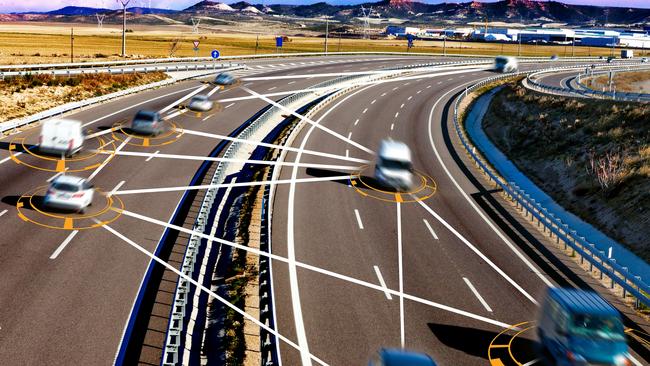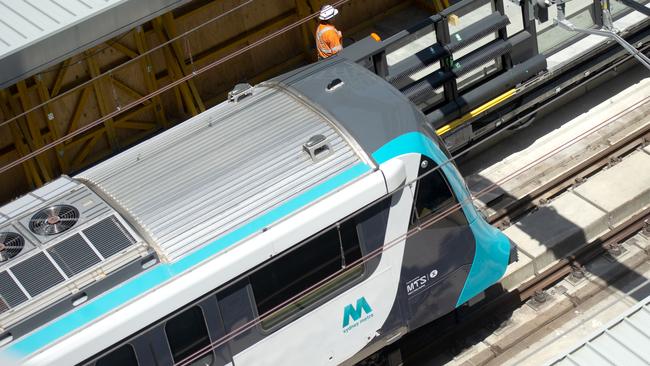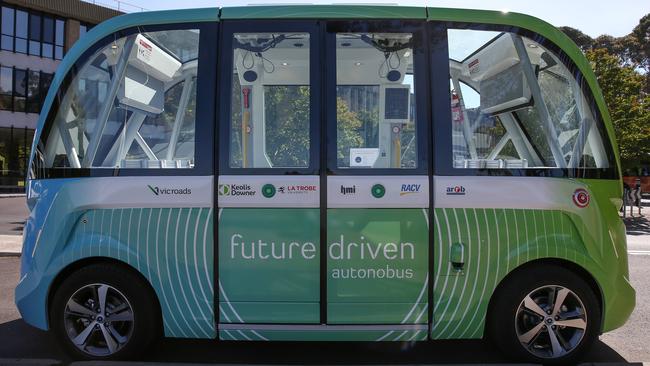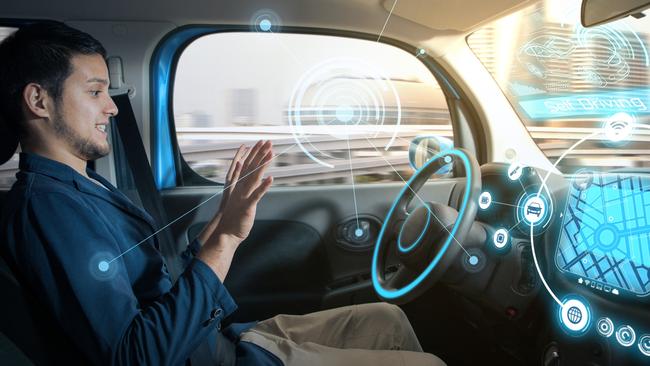Driverless cars: Are Melburnians ready to let go of the steering wheel?
We’re told driverless cars are just around the bend — but is Melbourne ready to ditch the steering wheel? Are driverless vehicles safe, and what happens when they’re on the road with cyclists, trucks and trams? Here’s what the experts tell us.
VIC News
Don't miss out on the headlines from VIC News. Followed categories will be added to My News.
We’re told driverless cars are just around the bend — but are we really ready to ditch the steering wheel?
Experts agree the technology’s inevitable but the road to hands-free driving still faces major hurdles, and not just with the cars themselves.
That’s because automated vehicles don’t just replace drivers. Experts say they’ll require a rethink of Melbourne’s infrastructure, including things like parking and fuel stations.
AUSSIES GIVE DRIVERLESS CARS THE THUMBS DOWN
NEW HI-TECH HUB REVS UP FOR DRIVERLESS CARS
CAN DRIVERLESS CARS AVOID KANGAROOS?

La Trobe driverless vehicle expert, Ani Desai, expects automated vehicles could be used for what’s known as “first and last mile” transport — the beginning or end of a journey — in 10 to 15 years.
The director for the university’s Centre for Technology envisages people taking automated shuttles to train stations for their work commute, for example.
“The first and last mile connectivity, that is what I think is low-hanging fruit for automated vehicles,” Dr Desai said.
“There are a lot of options to roll this out in more controlled environments … where you have (a) fixed route from origins to destinations.
“(This) makes it a lot easier to deploy, control and ensure things will work as expected.”
Automated vehicles are already being used for public transport in parts of the world as well as the mining industry.
Just weeks ago in Sydney, a driverless passenger train completed its first test journey.

Are they safe?
While the idea of sitting in a driverless car may not feel as safe as having your hands on the wheel, experts are unequivocal that fully-automated vehicles will reduce road deaths.
“If we get the technology right and we can train computers to navigate the complexity of our roads, we will save lives,” Monash University senior lecturer in transport, Alexa Delbosc, said.
“Because a computer will not drive drunk, it will not go above the speed limit, it will not be distracted by a mobile phone or a screaming child.
“They will still make mistakes. Sometimes somebody runs in front of a car faster than anyone can stop.”
Dr Desai, involved in La Trobe’s driverless shuttle bus trial at its Bundoora campus, said passengers were “not really worried that there’s no driver there”.
“The fact that the vehicle that we trialled had no steering wheel, no driver, it wasn’t even the top concern of our participants,” he said.
”One of the top concerns was around cyber security or what passengers do if something was to go wrong.”
He said the bus “could actually be put into commercial operation now, today.”

But don’t expect to see a driverless car pull up beside you at the traffic lights anytime soon.
It’s one thing to have them in a testing environment or removed from traffic, Monash civil engineering professor, Hai Vu, says, but it’s another to put them on the road with pedestrians and bicycles.
“From the technology point of view the machine can operate independently from the human,” Prof Vu said.
“The problem is if you actually put that machine into an environment where you have the human involved, so where the human is also utilising that space, then that is where the problem is.”
Road rethink needed
It’s not just a question of driverless technology being ready for our roads, Prof Vu said. Road infrastructure also needs to be able to support the vehicles.
He used the example of a traffic sign.
“This car needs to realise that it needs to stop … they need to stop but what if this signage is not at the standard and maybe being covered by something,” Prof Vu said.
“Then things might go wrong.”
There’s also the question of how fuel stations, car parks and the like will need to change to accommodate driverless vehicles.
Prof Vu doesn’t see them using petrol. Instead, electric car recharge stations would need to be built.
However, Dr Delbosc points out Australia has “a horrible record of taking up battery and hybrid cars”.
“I don’t think making it driverless is going to make it more appealing,” she said.

How does a driverless car ‘see’?
Navigation in driverless cars won’t be too different to what we have now, Prof Vu predicts.
Google Maps has already replaced or at least supplemented human navigators.
In the future, hi-tech vehicles would nagivate city roads in much the same way we do now.
“The driverless car will have exactly the same information and the same route planning and so on,” Prof Vu said.
“It’s exactly like you’re looking at the Google map.
“I don’t really see the difference between what happens now with the navigation and in the future.”
Prof Vu also compared communication between driverless cars with mobile phones connecting to wi-fi.
Some of the bigger and more difficult questions involve cyber security and how to prevent criminals from hacking driverless cars.
“Like anything else, I think it has to be a level of identification (so) that the car is actually receiving instructions from you during the time you actually pay for the service, own the car in a sense,” Prof Vu said.
“So just like your phone, you might need to use some sort of identification such as a code.”
Would you hop in a driverless car?
Driverless cars are more likely to be adopted by the taxi and ride-share industry before average consumers start upgrading from traditional cars, Dr Delbosc says.
“Because for them it’s about paying for drivers and they can save a lot of money without paying for drivers,” she said.
“I still think plenty of people will still want to drive their own cars, they will want to own their own cars.”
But Prof Vu said the technology could make car ownership as we know it redundant.
“The majority of what’s going on the road is because people need to go from A to B … Now, if all of that can be automated then, essentially, car ownership might disappear.”
Rather than someone spending a lot of money on something which spends most of its time in park, people could instead pay for the driverless service when they need it, Prof Vu explained.
Both Prof Vu and Dr Desai predicted this kind of scenario would also free up space currently used for parking and reduce congestion.
What’s the downside?
With cars expected to gain increasingly automated features as driverless technology matures, Dr Delbosc has warned of a “danger zone” where both humans and the car share control of the vehicle.
“Being fully automated is safe but the place in-between where humans have to be a backup for the computer is a very dangerous place because humans make a lousy backup for a computer,” she said.
This problem has been illustrated by recent high-profile fatal accidents involving driverless cars in the US.
There’s also the oft-raised ethical dilemma of what happens in the case of an unavoidable accident where a driverless car has to choose between injuring one person or another.
While the scenario is bleak, Prof Vu says driverless car accidents have to be looked at in the context of a lower overall road toll.
Essentially, while driverless vehicles wouldn’t wipe out fatal accidents, they would make them much rarer.
“The original objective to develop such a technology is to actually reduce accidents and we know that the majority of the accidents, 90 per cent or something, are actually caused by human error,” Prof Vu said.
But if people are not longer held responsible for accidents, where does the buck stop?
“If they get to a state where they’re fully automated. theoretically you could have a blind child in the vehicle,’ Dr Delbosc said.
“If you get to that stage the liability of the fault would be with the vehicle manufacturer or operator.”
But she said it was important Australia did not take the “cowboy approach, which some American states have taken, where they let the technology lead the regulation”.
“It resulted in at least one death so far.”


